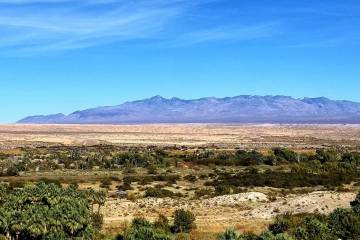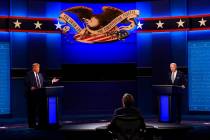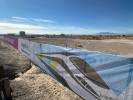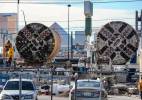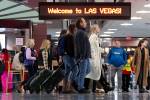EDITORIAL: All aboard the train to Victorville
Talk of a high-speed train connecting Las Vegas and Southern California has been little more than hot air for decades. Recently, the idea again made news when a Florida company announced it had acquired XpressWest, a stalled project that for years has sought to link Southern Nevada with Victorville via rail.
But many questions remain.
Miami-based Brightline, which is set to begin privately funded rail service between Miami and Orlando in four years, purchased XpressWest for an undisclosed sum. The company insists it could start construction on a Las Vegas-Victorville track — along the Interstate 15 corridor — by next year, with 2022 as a completion date.
“Our experience in Florida,” said Wes Edens of Fortress Investment Group, which backs Brightline, “is proving that private-sector investment has a meaningful role to play in developing transportation infrastructure.”
No argument here. If Brightline officials can secure private financing to pull this off — with no risk for taxpayers — more power to them. But the challenges are considerable.
Would California allow use of the I-15 median? “The I-15 is an important interstate freeway, and if you take away the median you are precluding the ability to later widen it,” transportation expert Bob Poole of the Reason Foundation told the LA Times.
In addition, the train is unlikely to be the technologically advanced marvel proponents have long promised. For financial purposes — Brightline claims it can reduce XpressWest’s projected costs by 50 percent — the system will be of a more traditional design. It could use diesel locomotives, the Times reported, and speeds would average about 92 mph — much slower than what would be considered “high-speed” rail. The trip to Victorville would take about two hours, not much of a time-saver over the drive.
Brightline also envisions eventually connecting the line with the high-speed system currently under construction to link LA and San Francisco. But that business model may be a pipe dream. The taxpayer-funded project, barely out of the starting gate, has become a money pit, a $77 billion boondoggle beset by constant delays and cost overruns. This week, a San Diego City Council member announced he will introduce a ballot initiative for 2020 to allow state voters to quash the train and divert transportation money to other projects.
Its future is highly uncertain.
Since the 1980s, proponents of bullet trains and maglev technology have touted the benefits of using tax dollars to fund rail projects to lure gamblers from Southern California to Las Vegas. But the government handouts never materialized, and private investors weren’t enthusiastic enough to risk their own money. Maybe that will change with Brightline’s involvement. And maybe it won’t.







